第21章 MONEY OR SIMPLE CIRCULATION(2)
Gold becomes the measure of value only because the exchange-value of all commodities is estimated in terms of gold.The universality of this dynamic relation,from which alone springs the capacity of gold to act as a measure,presupposes however that every single commodity is measured in terms of gold in accordance with the labour-time contained in both,so that the real measure of commodity and gold is labour itself,that is commodity and gold are as exchange-values equated by direct exchange.How this equating is carried through in practice cannot be discussed in the context of simple circulation.It is evident,however,that in countries where gold and silver are produced a definite amount of labour-time is directly incorporated in a definite quantity of gold and silver,whereas countries which produce no gold and silver arrive at the same result in a roundabout way,by direct or indirect exchange of their home products,i.e.,of a definite portion of their average national labour,for a definite quantity of labour-time embodied in the gold and silver of countries that possess mines.Gold must be in principle a variable value,if it is to serve as a measure of value,because only as reification of labour-time can it become the equivalent of other commodities,but as a result of changes in the productivity of concrete labour,the same amount of labour-time is embodied in unequal volumes of the same type of use-values.The valuation of all commodities in terms of gold --like the expression of the exchange-value of any commodity in terms of the use-value of another commodity --merely presupposes that at a given moment gold represents a definite quantity of labour-time.The law of exchange-value set forth earlier applies to changes occurring in the value of gold.If the exchange-value of commodities remains unchanged,then a general rise of their prices in terms of gold can only take place when the exchange-value of gold falls.If the exchange-value of gold remains unchanged,then a general rise of prices in terms of gold is only possible if the exchange-values of all commodities rise.The reverse takes place in the case of a general decline in the prices of commodities.If the value of an ounce of gold falls or rises in consequence of a change in the labour-time required for its production,then it will fall or rise equally in relation to all other commodities and will thus for all of them continue to represent a definite volume of labour-time.The same exchange-values will now be estimated in quantities of gold which are larger or smaller than before,but they will be estimated in accordance with their values and will therefore maintain the same value relative to one another.The ratio 2:4:8remains the same whether it becomes 1:2:4or 4:8:16.The fact that,because of the changing value of gold,exchange-values are represented by varying quantities of gold does not prevent gold from functioning as the measure of value,any more than the fact that the value of silver is one-fifteenth of that of gold prevents silver from taking over this function.
Labour-time is the measure of both gold and commodities,and gold becomes the measure of value only because all commodities are measured in terms of gold;it is consequently merely an illusion created by the circulation process to suppose that money makes commodities commensurable.[1]On the contrary,it is only the commensurability of commodities as materialised labour-time which converts gold into money.
The concrete form in which commodities enter the process of exchange is as use-values.The commodities will only become universal equivalents as a result of their alienation.The establishment of their price is merely their nominal conversion into the universal equivalent,an equation with gold which still has to be put into practice.But because prices convert commodities only nominally into gold or only into imaginary gold --i.e.,the existence of commodities as money is indeed not yet separated from their real existence --gold has been merely transformed into imaginary money,only into the measure of value,and definite quantities of gold serve in fact simply as names for definite quantities of labour-time.The distinct form in which gold crystallises into money depends in each case on the way in which the exchange-values of commodities are represented with regard to one another.
Commodities now confront one another in a dual form,really as use-values and nominally as exchange-values.They represent now for one another the dual form of labour contained in them,since the particular concrete labour actually exists as their use-value,while universal abstract labour-time assumes an imaginary existence in their price,in which they are all alike embodiments of the same substance of value,differing only quantitatively.